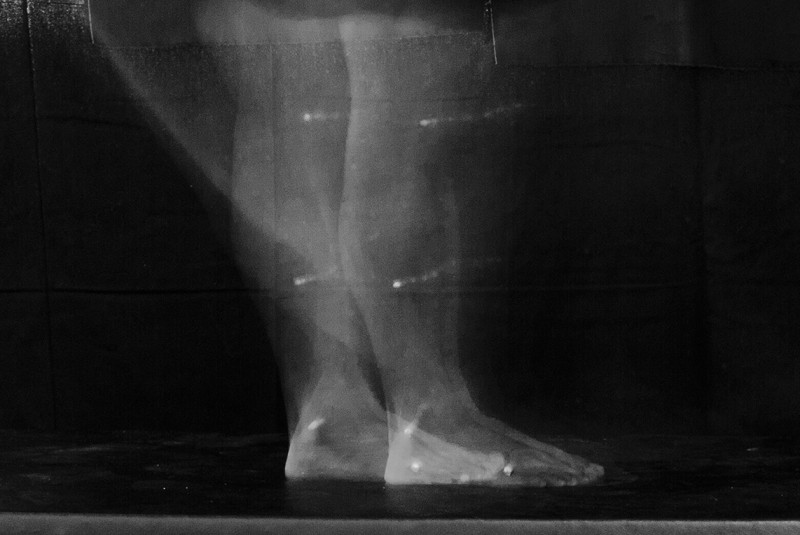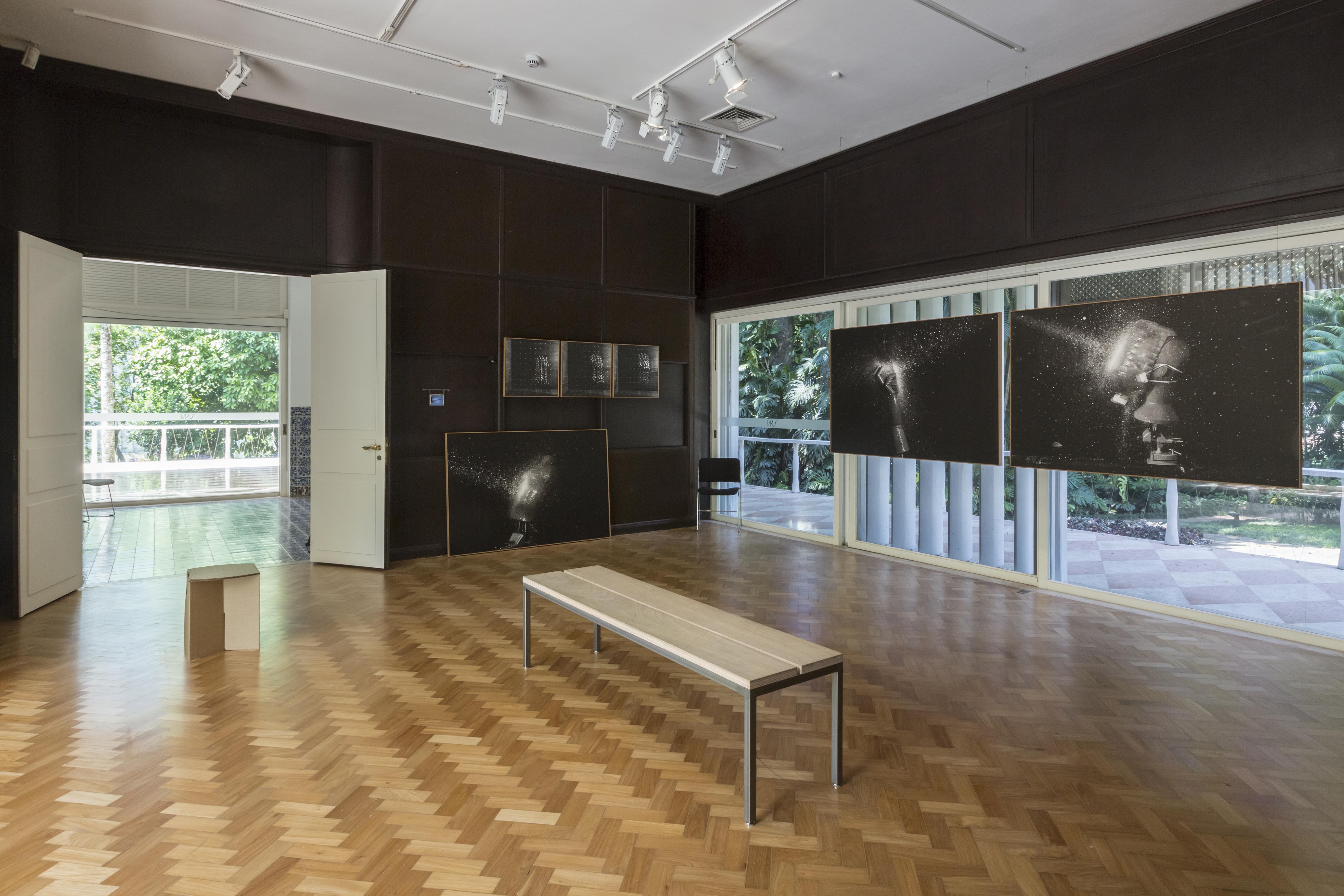










2017-2018
Letícia Ramos is a photographer-scientist, a traveler
who goes through the centuries revolving the various
adventures of invention of ways of representing the world. His
works usually cover a long process of developing devices
and techniques to reach a certain goal, and her photographic
images are the artistic expression of this search, like maps
that record a path. No wonder many of his photographs seem
abstract or coded, challenging everyone with his power of
synthesis.This work refers to the unfolding of the Industrial
Revolution, a period in which photography was used to
support scientific theses, to improve the “world machine”
and to increase productive capacity. The time of Frederick
Winslow Taylor (1856-1915), the American engineer who was
celebrated for studying the movement of the English workers
so that they could be improved and repeated. The perfecting
of machines was the perfecting of men.
In 1916, in the best example of Taylorism, the couple
Frank and Lillian Gilbreth published the article “The Effect
of Movement Studies on Workers.” Gilbreth promoted the
use of photography and animation to study work cycles and
figure out how to reduce them to shorter and more efficient
sequences of gestures, reducing fatigue. “Motion studies
leave any interesting activity,” propagandized. The workers
who underwent their studies would be “more efficient, more
successful, and happier.”
To achieve the goal, the Gilbreth combined the
study of micromovements, simultaneous motion tables, and
chrono-chyrographs, depicted in photographs depicting the
movement of workers through a light restroom. In order to do
so, it was necessary to expose the photographic plate for the
duration of the activity and to tie to the body of the workers
small lamps, whose light registered the displacement of the
limbs.
Chronographs were an outgrowth of the pioneering
researches of Eadweard Muybridge (1830-1904) and ÉtienneJules Marey (1830-1904), who produced still very present
forms of image construction. Similar to sculptural pirouettes
of light, chrono-chromatics were curiously attuned to the
production of futurist artists, who also promoted the utopia
of man-machine, without predicting that scientific positivism
could use photography to increase economic exploitation.
In The Resistance of the Body, Letícia simulates a
controlled environment to test the reactions of the bodies
to activities related to the manifestations of streets. With
cameras, dolls and models, the artist emulates the visual
repertoire of scientific studies in photographs that show
the throwing of objects, mobile communication on social
networks and the impact of water jets.
In the manner of Gilbreth, Leticia carried out
numerous tests. In some images, a head, a bust and a hand
receive jets that shatter in the backlight like a Milky Way. In
another image, a doll crashes on the floor, as if it were a living
person.
The fragmented bodies, the mechanical instruments,
the dark and dotted background create a calculated and
mysterious atmosphere, as if we were facing a robotic or spatial
experience. The use of photography gives truthfulness to the
work and causes even an unlikely situation to gain document
strength.
Four small screens reproduce in points the movement
of a falling body. Why fall? Gradually, the work becomes
abstract. The image of sending a message through the cell
phone, typed by a ball-gloved hand and photographed with
strobe light, resembles a set of atoms vibrating in space.
Another message sending, recorded with a glove speckled
with lights and divided into five blue images, seems to show
an electric shock, the same one that is reproduced in a small
polaroid. The blue transparency of the images reveals the
use of radiographic plates in place of films - the same kind
as those used by medicine to investigate the mysteries of the
body. Another plate shows a model and a solitary hand, as if
throwing a strange and surreal request for help.
The images of Leticia do not clarify anything. It is
possible that the object thrower represents a demonstrator.
The sender of the mobile message can be anyone. The
launching of water jets would be the prerogative of the police.
When is a body able to withstand street demonstrations?
Who is interested in visually representing these impacts.
Puppets and test models are commonly used in industry to
avoid physical damage to real people, especially in extreme
risk situations. The videos produced by carmakers to study
the impact of bodies at high speed are well known. Although
the circulation of these images can increase our sense of
security, its production can also act in the opposite direction,
by softening our perception of the risks we are subjected
to or by frightening us by indirectly displaying the physical
repression to which we are subject.
If we saw the photos of people killed by the car
crashes, we might not have sustained the high-speed
industry. Images of armaments and police groups, often
carried by the public administration to convey the sense of
security, also intimidate us. To the increase of firepower and
weapons of war, an increasingly abstract representation of
violence corresponds. Rare photographers on the front fly
drones and satellites.
Indirect representation also dehumanizes, is what
the artist seems to say in this dismal and disturbing work that
transforms photography into a still-life, or almost.
Thyago Nogueira
2017
















“Resiliency and Reverberation” - Mendes Wood DM, New York, USA, 2019
“Revolutionize “ – Mystetski Arsenal – Kyiv, Ucrania, 2018
“The Resistance of the Body”- Mendes Wood DM - Brussels, Belgium, 2018
“BODY TO BODY: The dispute of images, from photography to live broadcast”, Instituto Moreira Salles - Rio de Janeiro, Brazil, 2018
“BODY TO BODY: The dispute of images, from photography to live broadcast”, Instituto Moreira Salles - São Paulo, Brazil, 2017
